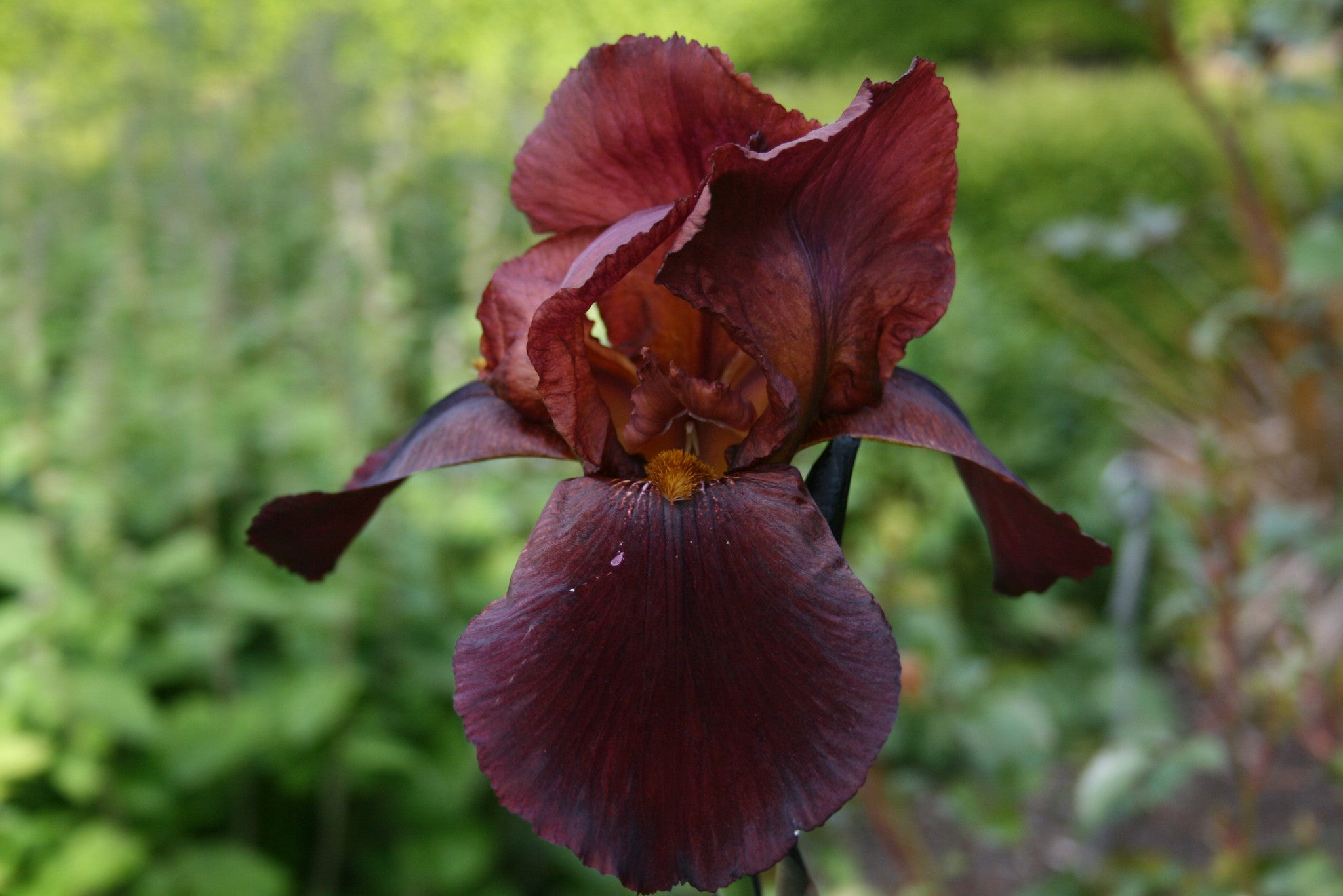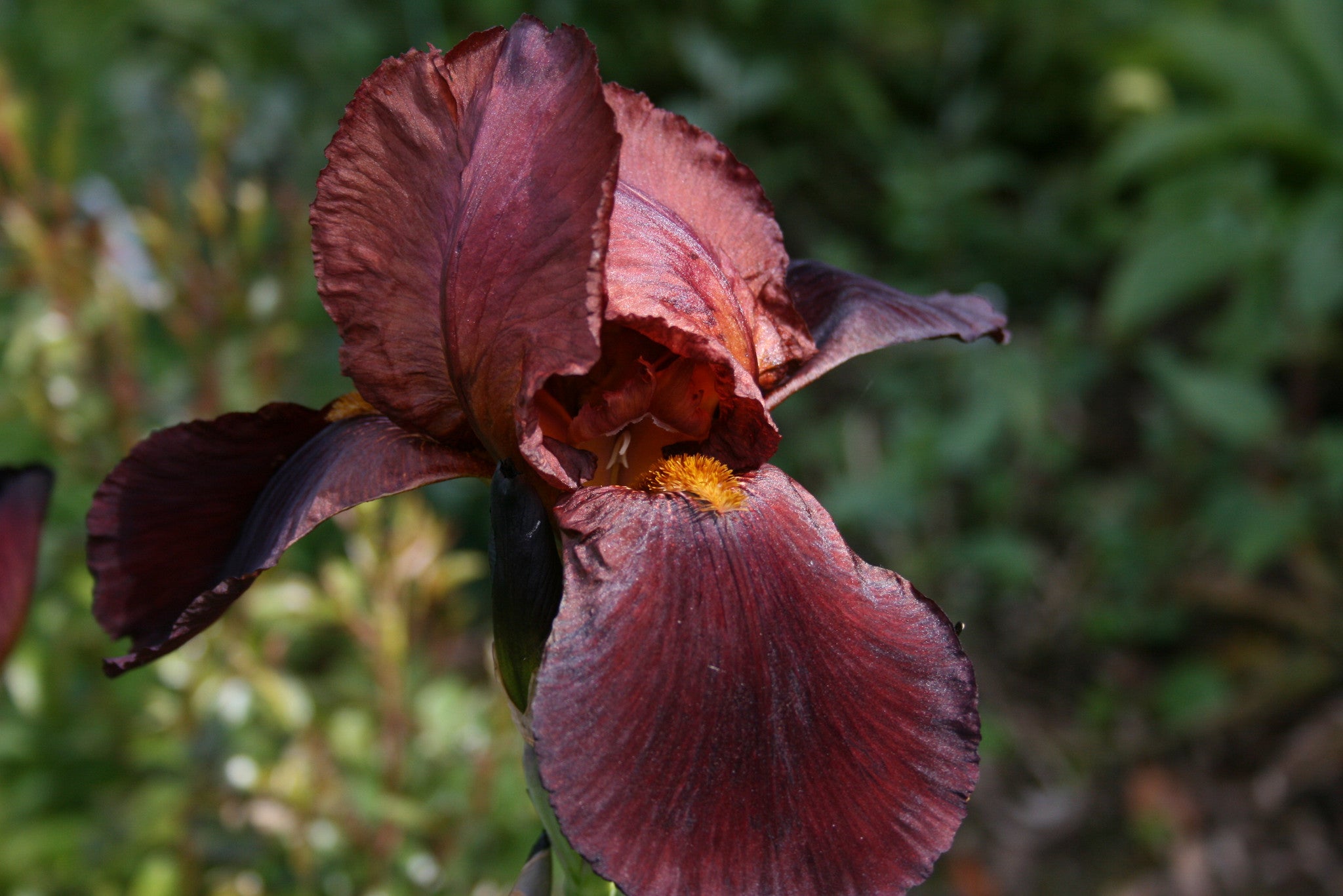Iris 'Natchez Trace' (TB)
Approx. 0.5 litre pot
About this cultivar:
Iris 'Natchez Trace' (TB) is a 1964 introduction from Jesse Wills, of Nashville, Tennessee, a past President of The American Iris Society. So... its a good one! Natchez however is a town in Mississippi, not Tennessee! The parentage is belived to be 'Orenda' X (( 'Orelio' x 'Heart's Desire') x (red seedling x 'Carnton')). More importantly this one has rose-red standards, conical in form and closed at the top; falls of rich crimson-brown velvet with smooth, unmarked hafts adorned with a heavy bronze-orange beard. Flowers are very large, the stalks well branched and it blooms midseason to late. Our photo makes the contrast look less pronounced than it really is!
- Position: Full sun, partial shade
- Soil: Almost any soil, grows well in Ballyrobert
- Flowers: May, June
- Other features: Cut Flowers or Dried Flowers
- Hardiness: Fully hardy - grows well in Ballyrobert
- Habit: Clump forming
- Foliage: Deciduous
- Height: 60 - 90 cm (2 - 3 ft)
- Spread: 45 - 60 cm (1.5 - 2 ft)
- Time to full growth: 2 to 5 years
- Plant type: Herbaceous Perennial
- Colour: Green, red, orange, brown
- Goes well with: Hosta, Hemerocallis, Geranium
About this genus:
Iris (i-ris) is a genus of 260–300 species of flowering plants with showy flowers. It takes its name from the Greek word for rainbow, referring to the wide variety of flower colours found among the many species. As well as being the scientific name, Iris is also used as a common name. Long in cultivation there seem to be as many cultivars as plants. Culturally the genus has had quite an impact. The fleur-de-lis, a stylized Iris, first occurs in its modern use as the emblem of the House of Capet (rulers of France 987 to 1328). It is also the universal symbol for Scouting. Many artists have a 'thing' with Iris, not least Van Gogh- who was a fan of Iris (not just sunflowers).... see images opposite!
As a group, Iris species can range from drought-tolerant dry land perennials to bog dwellers and from sun to shade, so there is no set of cultivation rules for the genus as a whole. In general though the cultivars we have in our garden (and sell), are tough, low maintenance plants perfect for wet gardens and similar sites.
Try pairing irises in the garden with Hosta, Hemerocallis, Geranium. They also look great as a cut-flower; the reason you don't get them in florists is that they don't transport well.




